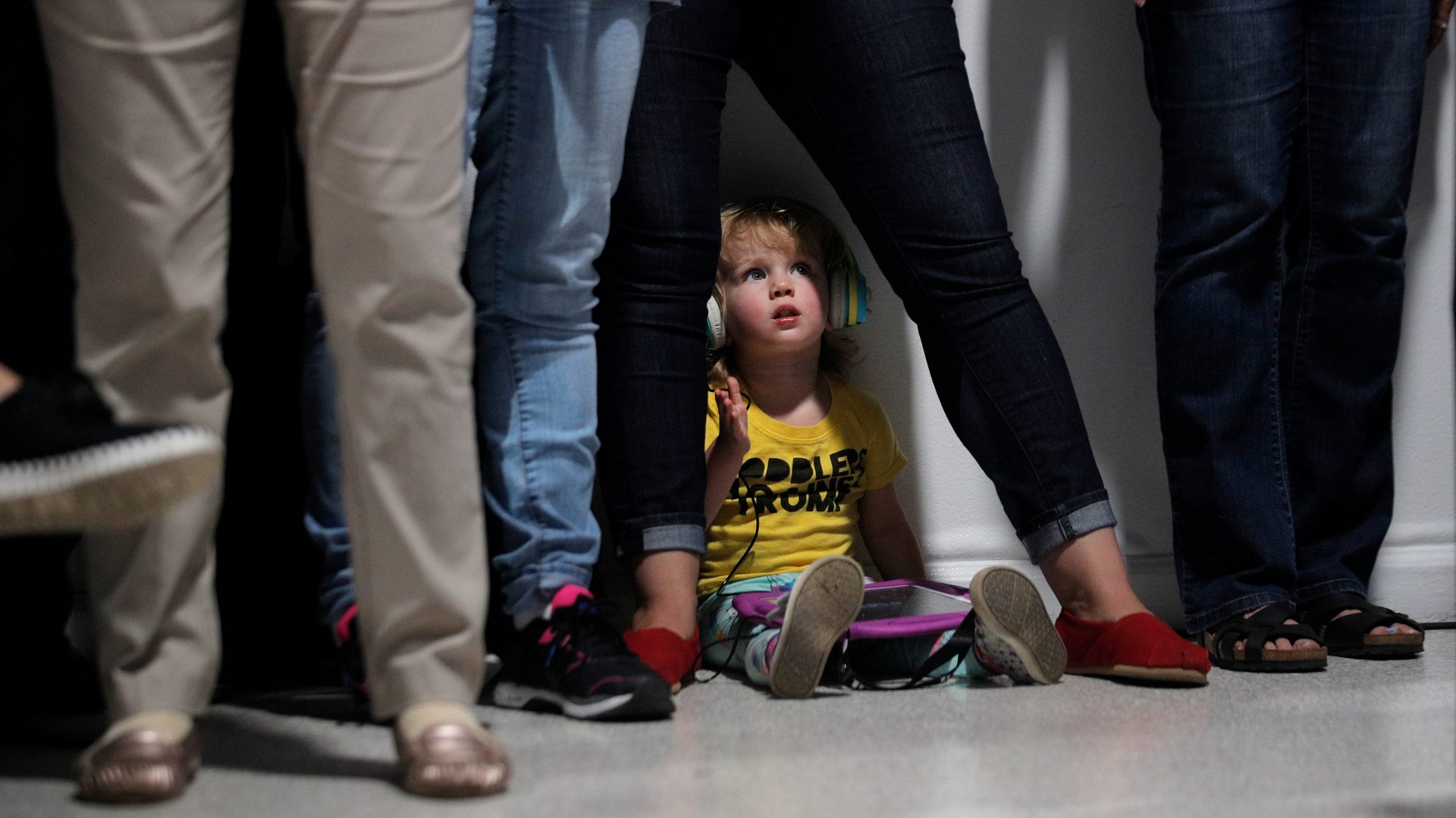Charting how the time parents spend with kids changes as they grow up
There is a saying about kids passed down from one generation of parents to another: “When they are little, your arms hurt. When they are older, your heart hurts.” This is not just folk wisdom: According to data tracking how parents spend time with children at different ages, it checks out statistically.


There is a saying about kids passed down from one generation of parents to another: “When they are little, your arms hurt. When they are older, your heart hurts.” This is not just folk wisdom: According to data tracking how parents spend time with children at different ages, it checks out statistically.
We collected numbers from the American Time Use Survey, an annual survey by the US Bureau of Labor Statistics. Respondents are asked to describe their activities over the past 24 hours, and we looked at the activities parents say included their children between 2005 and 2018. It tells the story of parenting from the earliest days of infancy through to adulthood:
In the very beginning, it’s all about physical care, otherwise known as the stuff that makes your arms tired. A fifth of time parents spend with kids before their first birthday is on what could be described as keep-them-alive tasks. At age 1, this falls dramatically and it becomes playtime: peek-a-boo, stack the box, dinging and singing, making art, dancing, hide and seek, jumping in puddles. The share of time spent playing with children peaks around age 1, and then is then slowly replaced by a variety of other activities, including socializing and watching TV. Overall, time spent with children declines as kids get older.
This is, of course, as it should be if the goal is to raise independent, competent adults. “Even if we could shape our children to come out a particular way, we would have defeated the point of having children in the first place,” says Alison Gopnik, a professor of philosophy and psychology at the University of Berkeley. “The point of having children is to have people to do something new, something unexpected, the things we never would have anticipated.”
Starting at around age 7, the schlepping really kicks in, with endless activities that require endless logistics: carpools, pick ups, retrieving lost bags and notebooks, and tending to gear that demands constant washing. Attending events, and traveling to and from said events, consume more of parents’ time during these years.
And if you think it will be easier when not engaged in high-stakes negotiations over whether ice cream will ruin dinner, think again. As kids get older the problems get tougher: heartbreak, failure, betrayal, rejection (social media now plays a prominent role in all of these). This is the bit when the heart starts hurting. Suddenly, an ice cream cannot make every problem go away. With every passing year there is less help you can offer in the form of performing tasks, and more in the way of providing emotional support (no less important, but in reality quite different).
Time will tell
Another parenting maxim is, “never do for children what they can do for themselves.” The data do not entirely support this, as parents report cleaning and doing laundry with their children well into their 20s. No parent should be doing an adult child’s laundry (for reference, 18-year-olds should be able to do everything on this list themselves).
According to Pew, 55% of all adults say parents do too much for their young adult children these days, while only 10% say parents are doing too little. This, dear reader, is why we have “adulting” schools, which have popped up to teach kids skills like laundry and the basics of personal finance.
Overall, there is hope in these numbers. As kids grow, we do less to manage them and hopefully just enjoy their company: socializing more, chauffeuring less. These charts are a reminder that the goal of this whole parenting thing, ironic as it may seem, is to make them not need you. It’s inconceivable in the early days, when they are wholly dependent on you for survival. But it happens.
Eventually, hopefully, they do their own laundry.